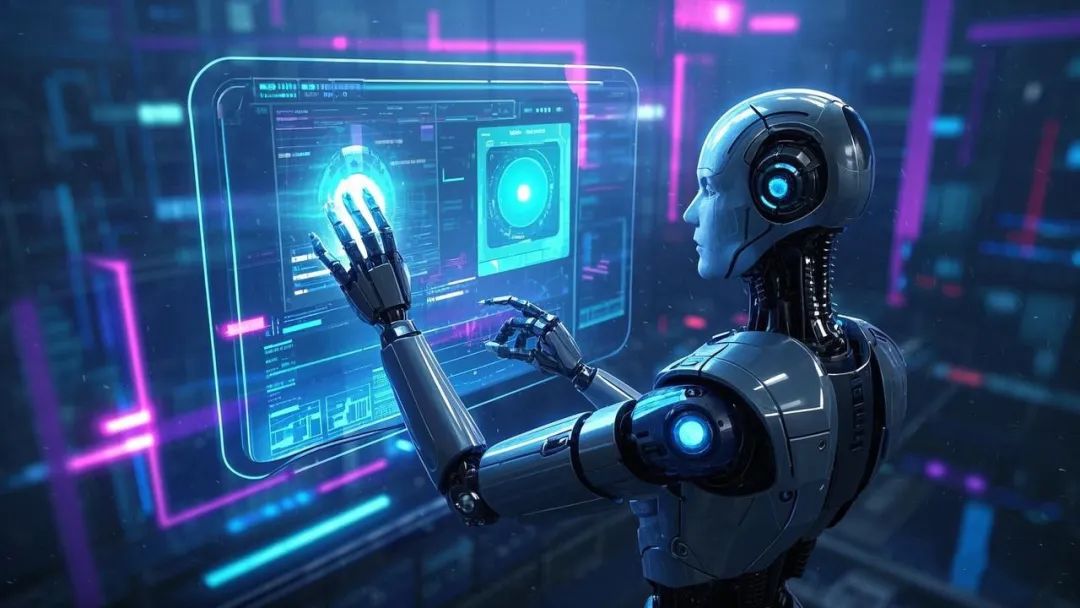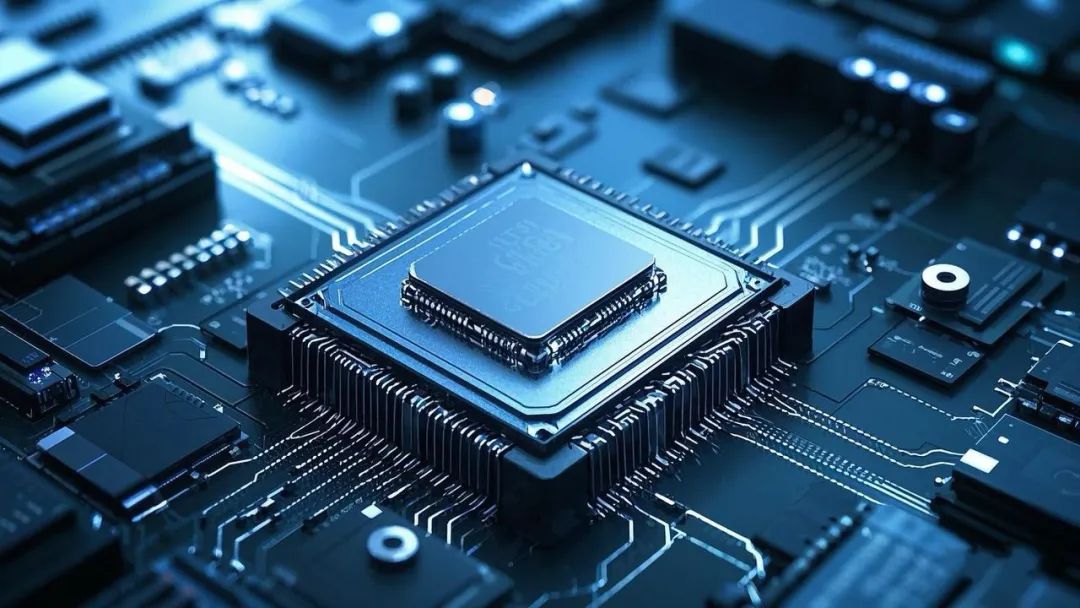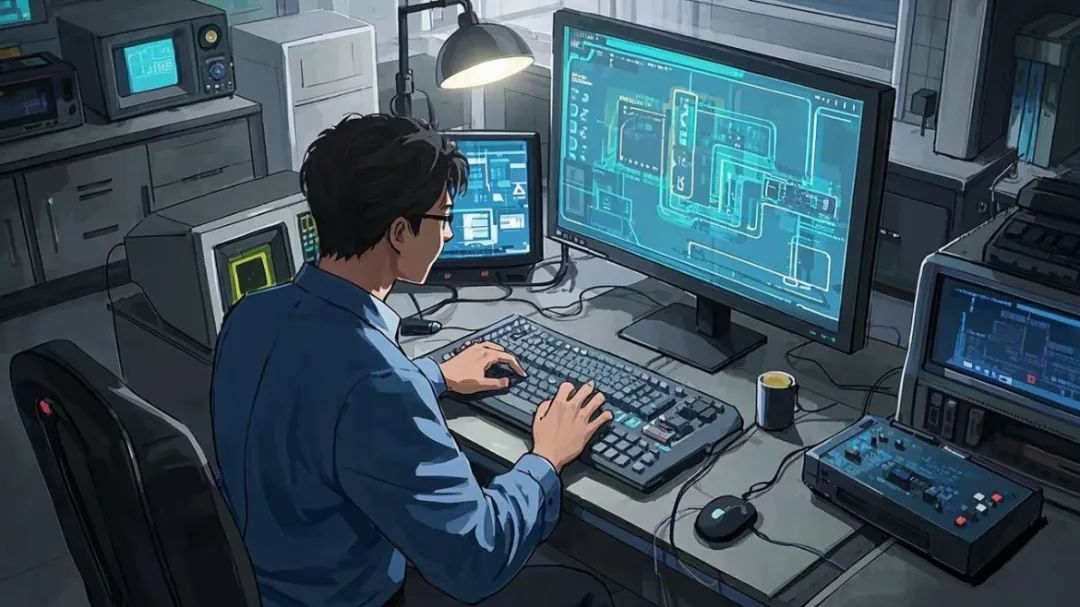ABOUT ME
“Years of experience in R&D at major internet companies. Focused on computer principles, AI, and full-stack development. Sharing insights on industry development, career planning, and life experiences.“
In today’s rapidly developing information technology landscape, technical positions in the IT field have become synonymous with high salaries and great potential.Faced with six core directions: software development, algorithms, hardware, embedded systems, IC design, and communication, many students often feel confused. There are also many university students majoring in computer science, electronic information, and automation who communicate with Newton.What are the differences between these R&D positions? How to choose the right path? Which positions offer higher salaries? What are their development prospects? Which positions are suitable for women? Is there a “35-year-old” crisis?…Today, Newton will analyze these positions from five dimensions: job content, technology stack, core positions, development prospects, and related majors. Additionally, a Q&A section addressing the top 10 frequently asked questions will be included to assist in your decision-making 💪Software Development: The “Architects” of the Digital WorldSoftware engineers are responsible for the design, coding, testing, and maintenance of software systems, covering the entire process from requirement analysis to product delivery. Technology StackMain programming languages include Java, Python, Go, and C++, with frameworks such as Spring, Django, and React, and toolchains covering Git, Docker, Kubernetes, etc.Core PositionsBackend Developer (Java/Go/C++): Builds server-side logic and data processing.Frontend Developer (React/Vue): Focuses on user interface design and interaction implementation.Mobile Developer (Kotlin/Swift/ArkTS): Specializes in Android/iOS/HarmonyOS application development.Cloud Native Engineer: Designs highly available systems based on containerization and microservices architecture.Full Stack Engineer: Possesses both frontend and backend development capabilities, suitable for rapid iteration projects.DevOps Engineer: Responsible for continuous integration and deployment.Development ProspectsThere is a high demand for software positions, but competition is fierce. It is recommended to transition to an architect or vertical domain technical expert after the age of 35.Cloud native technologies are driving digital transformation in enterprises, and those with microservices architecture design capabilities can earn an annual salary of 600,000 to 1,000,000 yuan.Related MajorsComputer Science and Technology, Software Engineering, Digital Media Technology, Information Security, Information Engineering, etc.Algorithm Development: The “Brain” of the Intelligent EraAlgorithm engineers solve complex problems through data modeling and optimization, covering areas such as machine learning, deep learning, natural language processing (NLP), and large models.
Technology StackMain programming languages include Java, Python, Go, and C++, with frameworks such as Spring, Django, and React, and toolchains covering Git, Docker, Kubernetes, etc.Core PositionsBackend Developer (Java/Go/C++): Builds server-side logic and data processing.Frontend Developer (React/Vue): Focuses on user interface design and interaction implementation.Mobile Developer (Kotlin/Swift/ArkTS): Specializes in Android/iOS/HarmonyOS application development.Cloud Native Engineer: Designs highly available systems based on containerization and microservices architecture.Full Stack Engineer: Possesses both frontend and backend development capabilities, suitable for rapid iteration projects.DevOps Engineer: Responsible for continuous integration and deployment.Development ProspectsThere is a high demand for software positions, but competition is fierce. It is recommended to transition to an architect or vertical domain technical expert after the age of 35.Cloud native technologies are driving digital transformation in enterprises, and those with microservices architecture design capabilities can earn an annual salary of 600,000 to 1,000,000 yuan.Related MajorsComputer Science and Technology, Software Engineering, Digital Media Technology, Information Security, Information Engineering, etc.Algorithm Development: The “Brain” of the Intelligent EraAlgorithm engineers solve complex problems through data modeling and optimization, covering areas such as machine learning, deep learning, natural language processing (NLP), and large models. Technology StackProficient in Python/C++ languages, frameworks such as TensorFlow/PyTorch/Spark, and skills in mathematical modeling/distributed computing/CUDA acceleration.Core PositionsMachine Learning Engineer: Develops and deploys models, such as recommendation systems and risk control models.Natural Language Processing (NLP) Engineer: Builds chatbots and text analysis systems.Computer Vision Engineer: Handles tasks such as image recognition and object detection;Data Scientist: Extracts value from data.AI Architect: Leads multimodal and edge computing solutions.Algorithm Researcher: Explores cutting-edge technologies such as reinforcement learning and generative AI.Development ProspectsAlgorithm engineers are in high demand in AI, fintech, and autonomous driving sectors. With the explosion of large models and generative AI, experts with deep learning and engineering capabilities will become scarce resources.Senior AI algorithm experts in major internet companies earn over 1,500,000 yuan annually, while fresh graduates start at over 500,000 yuan.Related MajorsArtificial Intelligence, Computer Science and Technology, Intelligent Science and Technology, Data Science and Big Data Technology, Mathematics/Statistics, etc.Hardware Development: The “Physical Foundation” of Electronic DevicesHardware engineers design the core circuits and systems of electronic devices, involving chip selection, PCB layout, signal integrity analysis, etc., and need to collaborate with software teams to optimize performance.
Technology StackProficient in Python/C++ languages, frameworks such as TensorFlow/PyTorch/Spark, and skills in mathematical modeling/distributed computing/CUDA acceleration.Core PositionsMachine Learning Engineer: Develops and deploys models, such as recommendation systems and risk control models.Natural Language Processing (NLP) Engineer: Builds chatbots and text analysis systems.Computer Vision Engineer: Handles tasks such as image recognition and object detection;Data Scientist: Extracts value from data.AI Architect: Leads multimodal and edge computing solutions.Algorithm Researcher: Explores cutting-edge technologies such as reinforcement learning and generative AI.Development ProspectsAlgorithm engineers are in high demand in AI, fintech, and autonomous driving sectors. With the explosion of large models and generative AI, experts with deep learning and engineering capabilities will become scarce resources.Senior AI algorithm experts in major internet companies earn over 1,500,000 yuan annually, while fresh graduates start at over 500,000 yuan.Related MajorsArtificial Intelligence, Computer Science and Technology, Intelligent Science and Technology, Data Science and Big Data Technology, Mathematics/Statistics, etc.Hardware Development: The “Physical Foundation” of Electronic DevicesHardware engineers design the core circuits and systems of electronic devices, involving chip selection, PCB layout, signal integrity analysis, etc., and need to collaborate with software teams to optimize performance. Technology StackProficient in EDA tools such as Altium and Cadence, familiar with analog/digital circuit design, and skilled in ARM architecture and embedded systems.Core PositionsHardware Design Engineer: Leads circuit design and simulation.FPGA Engineer: Develops programmable logic devices.RF Engineer: Develops wireless communication modules.PCB Engineer: Optimizes circuit board layout and signal integrity.Power Engineer: Designs power systems to ensure stable power supply operation.System Architect: Plans the overall architecture of products.Development ProspectsThe Internet of Things, smart hardware, and autonomous driving are driving hardware innovation, and the trend of domestic chip replacement brings new opportunities.The rise of RISC-V architecture presents opportunities for domestic chip design, with senior hardware engineers earning between 400,000 to 800,000 yuan annually.Related MajorsElectronic Information Engineering, Communication Engineering, Microelectronics Science and Engineering, Electronic Science and Technology, etc.Embedded Development: The “Invisible Bridge” Between Software and HardwareEmbedded engineers are the “cross-border professionals” between hardware and software, focusing on the development and optimization of embedded systems.They develop underlying systems for devices such as smart home controllers, industrial robots, and vehicle ECUs, achieving hardware driver development, real-time system porting, and power consumption optimization.
Technology StackProficient in EDA tools such as Altium and Cadence, familiar with analog/digital circuit design, and skilled in ARM architecture and embedded systems.Core PositionsHardware Design Engineer: Leads circuit design and simulation.FPGA Engineer: Develops programmable logic devices.RF Engineer: Develops wireless communication modules.PCB Engineer: Optimizes circuit board layout and signal integrity.Power Engineer: Designs power systems to ensure stable power supply operation.System Architect: Plans the overall architecture of products.Development ProspectsThe Internet of Things, smart hardware, and autonomous driving are driving hardware innovation, and the trend of domestic chip replacement brings new opportunities.The rise of RISC-V architecture presents opportunities for domestic chip design, with senior hardware engineers earning between 400,000 to 800,000 yuan annually.Related MajorsElectronic Information Engineering, Communication Engineering, Microelectronics Science and Engineering, Electronic Science and Technology, etc.Embedded Development: The “Invisible Bridge” Between Software and HardwareEmbedded engineers are the “cross-border professionals” between hardware and software, focusing on the development and optimization of embedded systems.They develop underlying systems for devices such as smart home controllers, industrial robots, and vehicle ECUs, achieving hardware driver development, real-time system porting, and power consumption optimization. Technology StackMain languages are C/C++, familiar with RTOS (such as FreeRTOS), ARM architecture, and proficient in communication protocols such as SPI/I2C/CAN/Modbus.Core PositionsEmbedded Software Engineer: Writes device drivers and system kernels.IoT Development Engineer: Designs communication and data acquisition functions for smart devices.Autonomous Driving System Engineer: Develops vehicle control modules.Real-Time Systems Engineer: Optimizes high-reliability systems in industrial control, robotics, aerospace, etc.Linux Kernel Engineer: Optimizes embedded operating systems.Development ProspectsEmbedded engineers are indispensable in smart hardware, Industry 4.0, and autonomous driving. With the popularity of edge computing and AI chips, engineers skilled in AIoT and low-power design will be more favored.Related MajorsElectronic Information Engineering, Automation, IoT Engineering, Computer Science and Technology, Electronic Information Science and Technology, etc.IC Design: The “Core Lifeline” of the Chip IndustryIC engineers engage in chip architecture design, logic implementation, and verification, involving digital/analog circuit design, layout, and tape-out testing.
Technology StackMain languages are C/C++, familiar with RTOS (such as FreeRTOS), ARM architecture, and proficient in communication protocols such as SPI/I2C/CAN/Modbus.Core PositionsEmbedded Software Engineer: Writes device drivers and system kernels.IoT Development Engineer: Designs communication and data acquisition functions for smart devices.Autonomous Driving System Engineer: Develops vehicle control modules.Real-Time Systems Engineer: Optimizes high-reliability systems in industrial control, robotics, aerospace, etc.Linux Kernel Engineer: Optimizes embedded operating systems.Development ProspectsEmbedded engineers are indispensable in smart hardware, Industry 4.0, and autonomous driving. With the popularity of edge computing and AI chips, engineers skilled in AIoT and low-power design will be more favored.Related MajorsElectronic Information Engineering, Automation, IoT Engineering, Computer Science and Technology, Electronic Information Science and Technology, etc.IC Design: The “Core Lifeline” of the Chip IndustryIC engineers engage in chip architecture design, logic implementation, and verification, involving digital/analog circuit design, layout, and tape-out testing. Technology StackMust be proficient in Verilog/SystemVerilog languages, familiar with EDA tools (such as Cadence, Synopsys), and knowledgeable about semiconductor processes.Core PositionsDigital IC Design Engineer: Designs logic chips such as CPUs and GPUs.Analog IC Engineer: Develops power management, ADC/DAC, and other analog circuits.Physical Design Engineer: Optimizes chip layout and power consumption.IC Verification Engineer: Verifies chip functionality.Chip Architect: Plans SoC system-level solutions.Development ProspectsWith the increase in domestic chip production and demand for AI chips, IC design engineers have become high-paying and scarce positions, with senior engineers earning over 1,000,000 yuan, but the technical threshold is extremely high.Related MajorsMicroelectronics Science and Engineering, Integrated Circuit Design and Integrated Systems, Electronic Science and Technology, etc.Communication Development: The “Highway” of Information TransmissionCommunication engineers develop systems for 5G/6G networks, satellite communications, etc., optimizing signal transmission protocols and network architecture.
Technology StackMust be proficient in Verilog/SystemVerilog languages, familiar with EDA tools (such as Cadence, Synopsys), and knowledgeable about semiconductor processes.Core PositionsDigital IC Design Engineer: Designs logic chips such as CPUs and GPUs.Analog IC Engineer: Develops power management, ADC/DAC, and other analog circuits.Physical Design Engineer: Optimizes chip layout and power consumption.IC Verification Engineer: Verifies chip functionality.Chip Architect: Plans SoC system-level solutions.Development ProspectsWith the increase in domestic chip production and demand for AI chips, IC design engineers have become high-paying and scarce positions, with senior engineers earning over 1,000,000 yuan, but the technical threshold is extremely high.Related MajorsMicroelectronics Science and Engineering, Integrated Circuit Design and Integrated Systems, Electronic Science and Technology, etc.Communication Development: The “Highway” of Information TransmissionCommunication engineers develop systems for 5G/6G networks, satellite communications, etc., optimizing signal transmission protocols and network architecture. Technology StackC/C++, Python, network protocols (TCP/IP, HTTP/3), familiar with SDN/NFV technologies.Core PositionsCommunication Protocol Engineer: Formulates and optimizes network transmission rules.Wireless Communication Engineer: Develops 5G/6G base station and terminal technologies.Network Optimization Engineer: Enhances communication network performance and coverage.Network Security Engineer: Designs firewalls and intrusion detection systems.Satellite Communication Engineer: Develops low-orbit satellite communication solutions.Optical Communication Engineer: Designs high-speed fiber optic transmission systems.Development ProspectsTechnological innovations in 5G/6G, satellite internet, and quantum communication are driving continuous expansion in the communication field.Related MajorsCommunication Engineering, Electronic Information Engineering, Optoelectronic Information Science and Engineering, Information Engineering, Network Engineering, Cybersecurity, etc.Newton’s Q&A 💬1. How to determine which position is suitable for you?Interest and Skill Matching: If you enjoy programming and have strong logical thinking, consider software or algorithms; if you are interested in circuits and physics, hardware, IC design, or embedded systems may be suitable; if you excel in mathematical modeling, you can try algorithms or communication.Practical Trial and Error: Experience different job contents through course experiments, open-source projects, or competitions (such as ACM, electronic design competitions).Personality Fit: Software/algorithms require quick learning of new technologies; hardware/IC design requires patience and attention to detail; communication/embedded systems require cross-domain collaboration skills.2. Is the “35-year-old crisis” common? How to cope?Job Differences: Software/algorithm positions face rapid technological iteration and fierce competition; hardware/IC design values experience accumulation, with lower risks of mid-life crises.Long-term Planning: Before 35, focus on becoming an expert in technology, and later transition to technical management, architecture, or cross-domain roles.Continuous Learning: Stay updated on industry trends (such as large models, AI chips, 6G communication) to maintain technical sensitivity.3. Which positions offer higher salaries? How to choose?Current Trends: Algorithm engineers (AI direction, annual salary over 500,000 yuan), IC design (chip industry, senior positions over 1,000,000 yuan) lead in salary, while cloud computing architects earn between 400,000 to 800,000 yuan; software development has a large base, and top talents also earn considerable income.Rational Choice: High-paying positions often have higher requirements for education (such as algorithm and IC design positions favoring master’s or PhD degrees) and stress resistance, so assess based on your own conditions.Long-term Perspective: Communication and embedded systems have great potential in the IoT era, so pay attention to positions in rising industries.4. Are women suitable for technical positions? Which positions are more friendly?Breaking Prejudice: Technical ability is unrelated to gender; women can excel in algorithms and software development.Job Characteristics: Software testing, frontend development, and communication protocol research have lower physical demands; hardware/embedded systems require frequent interaction with laboratory equipment, but teamwork can compensate.Leveraging Advantages: Women’s communication skills and attention to detail are competitive in project management, product management, data analysis, and other roles.5. What are the requirements for schools and degrees for different positions?Hard Threshold Positions: Algorithm research (core teams in major companies) and IC design generally require a master’s degree or higher, favoring graduates from 985/211 or strong professional schools (such as Xidian University, Chengdu University of Electronic Science and Technology).Ability-Oriented Positions: Software development and communication engineering focus more on project experience and technology stack, allowing students from non-prestigious schools to break through through internships and GitHub projects.Degree Remediation: Enhance competitiveness through awards in top competitions (such as national modeling competitions), papers, patents, and internships at major companies.6. Is it necessary to pursue a master’s degree?Preferred Fields for Graduate Studies: For positions in algorithm, IC design, and communication protocol research, a master’s degree is often a prerequisite.Fields Where Direct Employment is Feasible: Software development (frontend/backend/client), testing engineers, and embedded application layer development prioritize practical experience.7. How to transition or cross over between positions?Skill Transfer: Transitioning from software to algorithms requires strengthening mathematical foundations; moving from hardware to embedded systems requires learning RTOS development; transitioning from communication to cloud computing can enhance knowledge of network protocols.Preparation in School: Elective cross-domain courses (such as learning digital circuits in software engineering) and participating in interdisciplinary projects (such as IoT + AI).8. How to enhance competitiveness through self-study?Clear Learning Path: Software development requires proficiency in 1-2 programming languages (such as Java/Python) and frameworks; IC design requires mastery of Verilog and EDA tools.Prioritize Practice: Gain experience by replicating classic projects (such as operating systems, simple CPUs) and participating in hackathons.Recommended Resources: For algorithm positions, practice on LeetCode + Kaggle; for hardware positions, study “CMOS Integrated Circuit Design”; for embedded systems, focus on STM32 + Linux driver development.9. Which positions are suitable for women?It is recommended to prioritize positions that combine technology and business.Frontend Development/UI Interaction: Significant aesthetic advantages, relatively low technical barriers.Testing Development/Data Science: Requires a combination of detail and logic, with high tolerance from companies for women.Communication Protocol/Algorithm Optimization: Focuses on theory and model design, with lower physical demands.Non-Technical Positions: Product managers, product operations, data analysis, project managers, etc., where understanding technology provides an advantage.10. What are the future trends in the industry? Which directions are worth paying attention to?Hot Fields: AI chip design (such as GPU/IP cores), autonomous driving algorithms, satellite communication, RISC-V architecture development.Policy Dividends: Domestic substitution drives semiconductor equipment, industrial software (EDA/CAE), and quantum communication.Technological Integration: Embedded + AI (edge computing), hardware + biomedicine (medical electronics), communication + energy (smart grid).Newton has something to say 💬Software engineers build the digital world, algorithm engineers provide intelligence, hardware and IC engineers create the physical foundation, while embedded and communication engineers connect everything.Software emphasizes breadth, algorithms focus on depth, hardware requires patience, embedded seeks cross-domain skills, IC design aims for peaks, and communication expands territories.🎯 May every student find their own “starry sea“!Previous Highlights (Click “Read More” to learn more)
Technology StackC/C++, Python, network protocols (TCP/IP, HTTP/3), familiar with SDN/NFV technologies.Core PositionsCommunication Protocol Engineer: Formulates and optimizes network transmission rules.Wireless Communication Engineer: Develops 5G/6G base station and terminal technologies.Network Optimization Engineer: Enhances communication network performance and coverage.Network Security Engineer: Designs firewalls and intrusion detection systems.Satellite Communication Engineer: Develops low-orbit satellite communication solutions.Optical Communication Engineer: Designs high-speed fiber optic transmission systems.Development ProspectsTechnological innovations in 5G/6G, satellite internet, and quantum communication are driving continuous expansion in the communication field.Related MajorsCommunication Engineering, Electronic Information Engineering, Optoelectronic Information Science and Engineering, Information Engineering, Network Engineering, Cybersecurity, etc.Newton’s Q&A 💬1. How to determine which position is suitable for you?Interest and Skill Matching: If you enjoy programming and have strong logical thinking, consider software or algorithms; if you are interested in circuits and physics, hardware, IC design, or embedded systems may be suitable; if you excel in mathematical modeling, you can try algorithms or communication.Practical Trial and Error: Experience different job contents through course experiments, open-source projects, or competitions (such as ACM, electronic design competitions).Personality Fit: Software/algorithms require quick learning of new technologies; hardware/IC design requires patience and attention to detail; communication/embedded systems require cross-domain collaboration skills.2. Is the “35-year-old crisis” common? How to cope?Job Differences: Software/algorithm positions face rapid technological iteration and fierce competition; hardware/IC design values experience accumulation, with lower risks of mid-life crises.Long-term Planning: Before 35, focus on becoming an expert in technology, and later transition to technical management, architecture, or cross-domain roles.Continuous Learning: Stay updated on industry trends (such as large models, AI chips, 6G communication) to maintain technical sensitivity.3. Which positions offer higher salaries? How to choose?Current Trends: Algorithm engineers (AI direction, annual salary over 500,000 yuan), IC design (chip industry, senior positions over 1,000,000 yuan) lead in salary, while cloud computing architects earn between 400,000 to 800,000 yuan; software development has a large base, and top talents also earn considerable income.Rational Choice: High-paying positions often have higher requirements for education (such as algorithm and IC design positions favoring master’s or PhD degrees) and stress resistance, so assess based on your own conditions.Long-term Perspective: Communication and embedded systems have great potential in the IoT era, so pay attention to positions in rising industries.4. Are women suitable for technical positions? Which positions are more friendly?Breaking Prejudice: Technical ability is unrelated to gender; women can excel in algorithms and software development.Job Characteristics: Software testing, frontend development, and communication protocol research have lower physical demands; hardware/embedded systems require frequent interaction with laboratory equipment, but teamwork can compensate.Leveraging Advantages: Women’s communication skills and attention to detail are competitive in project management, product management, data analysis, and other roles.5. What are the requirements for schools and degrees for different positions?Hard Threshold Positions: Algorithm research (core teams in major companies) and IC design generally require a master’s degree or higher, favoring graduates from 985/211 or strong professional schools (such as Xidian University, Chengdu University of Electronic Science and Technology).Ability-Oriented Positions: Software development and communication engineering focus more on project experience and technology stack, allowing students from non-prestigious schools to break through through internships and GitHub projects.Degree Remediation: Enhance competitiveness through awards in top competitions (such as national modeling competitions), papers, patents, and internships at major companies.6. Is it necessary to pursue a master’s degree?Preferred Fields for Graduate Studies: For positions in algorithm, IC design, and communication protocol research, a master’s degree is often a prerequisite.Fields Where Direct Employment is Feasible: Software development (frontend/backend/client), testing engineers, and embedded application layer development prioritize practical experience.7. How to transition or cross over between positions?Skill Transfer: Transitioning from software to algorithms requires strengthening mathematical foundations; moving from hardware to embedded systems requires learning RTOS development; transitioning from communication to cloud computing can enhance knowledge of network protocols.Preparation in School: Elective cross-domain courses (such as learning digital circuits in software engineering) and participating in interdisciplinary projects (such as IoT + AI).8. How to enhance competitiveness through self-study?Clear Learning Path: Software development requires proficiency in 1-2 programming languages (such as Java/Python) and frameworks; IC design requires mastery of Verilog and EDA tools.Prioritize Practice: Gain experience by replicating classic projects (such as operating systems, simple CPUs) and participating in hackathons.Recommended Resources: For algorithm positions, practice on LeetCode + Kaggle; for hardware positions, study “CMOS Integrated Circuit Design”; for embedded systems, focus on STM32 + Linux driver development.9. Which positions are suitable for women?It is recommended to prioritize positions that combine technology and business.Frontend Development/UI Interaction: Significant aesthetic advantages, relatively low technical barriers.Testing Development/Data Science: Requires a combination of detail and logic, with high tolerance from companies for women.Communication Protocol/Algorithm Optimization: Focuses on theory and model design, with lower physical demands.Non-Technical Positions: Product managers, product operations, data analysis, project managers, etc., where understanding technology provides an advantage.10. What are the future trends in the industry? Which directions are worth paying attention to?Hot Fields: AI chip design (such as GPU/IP cores), autonomous driving algorithms, satellite communication, RISC-V architecture development.Policy Dividends: Domestic substitution drives semiconductor equipment, industrial software (EDA/CAE), and quantum communication.Technological Integration: Embedded + AI (edge computing), hardware + biomedicine (medical electronics), communication + energy (smart grid).Newton has something to say 💬Software engineers build the digital world, algorithm engineers provide intelligence, hardware and IC engineers create the physical foundation, while embedded and communication engineers connect everything.Software emphasizes breadth, algorithms focus on depth, hardware requires patience, embedded seeks cross-domain skills, IC design aims for peaks, and communication expands territories.🎯 May every student find their own “starry sea“!Previous Highlights (Click “Read More” to learn more)